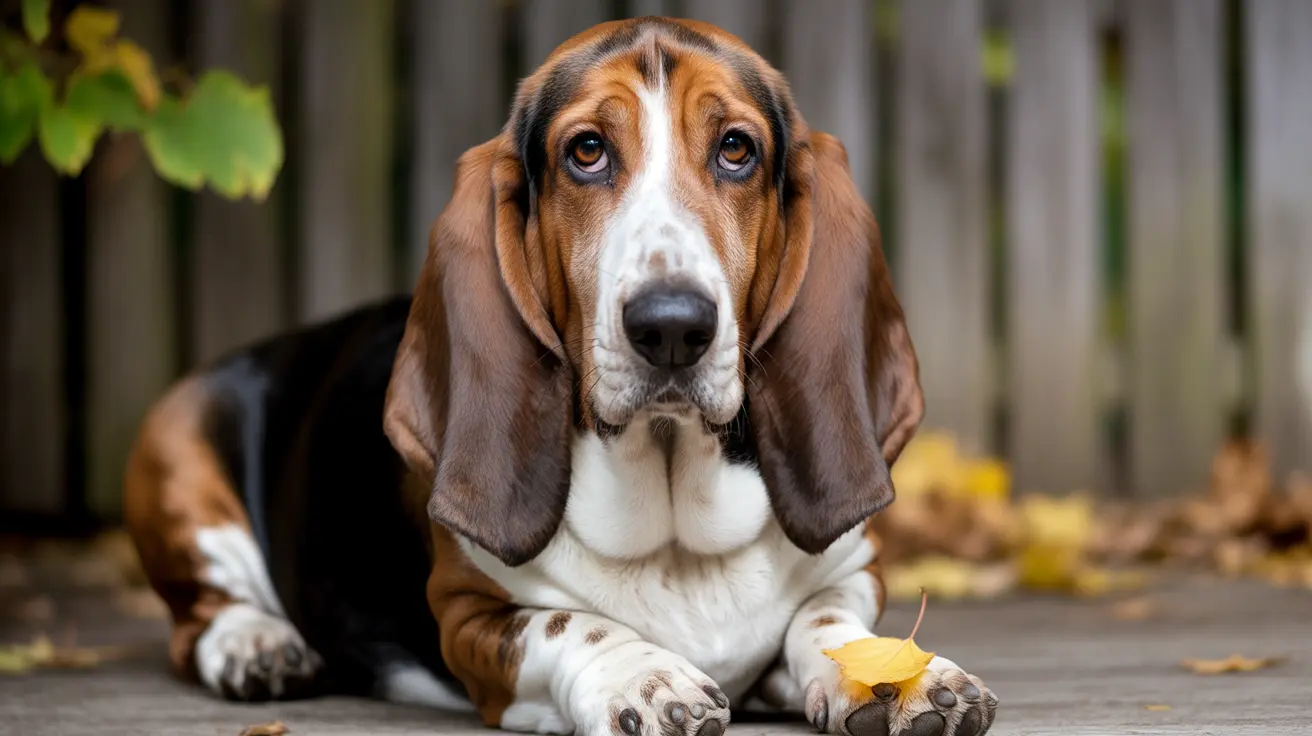Basset Hounds are beloved for their distinctive long ears, soulful eyes, and charming personalities. But one of their most fascinating features is their diverse range of coat colors and patterns. Whether you're a breed enthusiast, potential owner, or simply curious about these adorable hounds, understanding Basset Hound colors can help you appreciate these remarkable dogs even more.
In this comprehensive guide, we'll explore everything from AKC-recognized standard colors to rare and unique patterns, helping you understand the rich variety of Basset Hound coat colors and their genetic foundations.
Standard Basset Hound Colors and Patterns
The American Kennel Club primarily recognizes two main color categories for Basset Hounds, though they accept all traditional hound colors. Let's explore these standard variations in detail:
Tri-Color Combinations
The classic tri-color pattern is the most recognizable and common in Basset Hounds. This striking combination typically features:
- Black as the primary color
- Rich tan or mahogany markings
- White areas, usually on the chest, feet, and tail tip
Variations within the tri-color category can include different shades of brown replacing the traditional tan, creating subtle but beautiful differences in appearance.
Bi-Color Varieties
Bi-color Basset Hounds display two distinct colors, with white typically being one of them. Common bi-color combinations include:
- Red and white
- Lemon and white
- Black and white
- Mahogany and white
Rare and Non-Standard Color Patterns
While less common, these color variations add to the breed's diversity and charm:
Blue and White
This rare color combination features a diluted black that appears bluish-gray paired with white markings. While striking, this color is less desirable due to potential genetic health concerns.
Lemon and White
This elegant combination features a pale yellow or cream color (known as "lemon") with white markings. It's one of the more unusual color patterns in the breed.
Understanding Coat Markings and Patterns
Basset Hounds can display various distinctive markings regardless of their base colors:
Common Marking Types
- Black masks
- White blazes on the face
- Ticking (small spots on white areas)
- Saddle patterns
- Piebald patterns (predominantly white with large colored patches)
Genetics and Color Inheritance
The fascinating variety of Basset Hound colors results from complex genetic interactions. Different gene combinations determine not only the base colors but also the distribution and intensity of markings. This genetic diversity explains why puppies from the same litter can display different color patterns.
Frequently Asked Questions
What are the standard Basset Hound coat colors recognized by the American Kennel Club?
The AKC primarily recognizes tri-color and bi-color patterns, though all traditional hound colors are acceptable. The most common standard colors are black, white, and tan combinations, along with various bi-color patterns including red and white.
How do tri-color and bi-color patterns differ in Basset Hound coats?
Tri-color patterns feature three distinct colors, typically black, white, and tan/brown. Bi-color patterns consist of two colors, usually white paired with another color such as black, red, or lemon.
Are blue and lemon Basset Hound coat colors common or desirable?
Blue and lemon colors are less common in Basset Hounds. Blue coloring is generally less desirable due to potential genetic health concerns, while lemon is simply rare but acceptable within breed standards.
What genetic factors influence the different Basset Hound coat colors and markings?
Coat colors and patterns are determined by multiple genes that control pigment production and distribution. These genes interact to create the various color combinations and marking patterns seen in the breed.
Can Basset Hounds have long-haired coats, and are they accepted by breed standards?
No, long-haired coats are not accepted by breed standards. Basset Hounds should have short, smooth coats. Long-haired varieties are considered a fault and are not recognized by the AKC.
Whether you prefer the classic tri-color look or are drawn to rarer color combinations, each Basset Hound's coat tells a unique genetic story. While color variations add to the breed's charm, remember that temperament and health should always be the primary considerations when choosing a Basset Hound companion.






